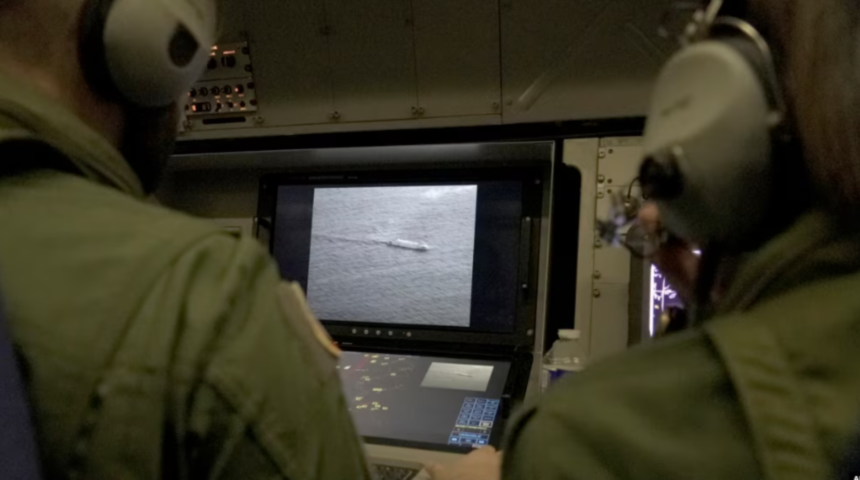European leaders have expressed concern over the increasing frequency of attacks on civilian vessels and critical civilian infrastructure, as authorities investigate the fourth incident of subsea cable cutting in the Baltic Sea in recent months.
This week, the Bulgarian-owned vessel “Vezhen” was detained in the Baltic Sea under suspicion of dragging its anchor along the seabed, cutting a subsea data cable between Sweden and Latvia.
Aleksander Kalchev, CEO of the company that owns the “Vezhen,” dismissed allegations that the damage was intentional.
However, Swedish security services are conducting further investigations.
Latvian Defense Minister Andris Spruds, in a written response to Voice of America on Wednesday, confirmed that Latvia is working closely with Sweden and NATO to investigate the incident.
“The Latvian Navy’s diving team has conducted an inspection at the incident site and collected evidence in cooperation with Swedish Coast Guard vessels,” Mr. Spruds told VOA.
He emphasized that Latvia would introduce new technology and continue to work closely with NATO allies to enhance the protection of critical infrastructure at sea.
“These acts of sabotage will not be tolerated, and we will continue to take bold actions in accordance with the rule of law,” said Mr. Spruds.
Finnish Prime Minister Petteri Orpo, whose country initiated an investigation into sabotage suspicions after the December 25 damage to the “Estlink 2” subsea power cable connecting Finland and Estonia, stressed the urgency of the situation.
“This cannot continue,” he told Finnish media outlet ‘Lannen’ this week. He called for stronger coordination within the European Union to prevent further attacks.
“We must be united in sanctions against Russia. This applies to every EU country,” he told a Finnish journalist.
The Polish government, another Baltic Sea country with over 1,000 kilometers of coastline, has called for enhanced security measures.
In an interview with Voice of America, Polish Interior Minister Tomasz Siemoniak stated that recent attacks on subsea cables—such as those linking Latvia and Sweden, as well as Estonia and Finland—align with sabotage cases seen in the region.
While investigations are ongoing, Poland views these incidents as deliberate actions, he said.
“Even if there is no direct evidence of sabotage linking Moscow today, provocations are part of Russia’s standard arsenal… we are at a point where we must assume these actions are deliberate and intentional,” he told VOA on Tuesday.
Polish officials also highlight the need for more coordinated measures in maritime security.
“We want missions like these to be carried out in the Baltic Sea. There is a lot of traffic when it comes to ships or smaller vessels, and security is absolutely critical,” he told VOA.
Given the region’s strategic importance and the increasing Russian maritime activity, he said NATO should prioritize the Baltic Sea as a critical security zone.
Political and Strategic Motives
As evidence continues to be gathered, the geopolitical motivations behind these attacks are becoming clearer.
Analysts believe that the sabotage is not only an attempt to disrupt communication networks but also a calculated effort to test NATO’s response capabilities and create divisions among member states.
Legislators in Finland, NATO’s newest member, have expressed concerns that these incidents may be part of a larger conflict that many Western governments hesitate to acknowledge.
“If we do not know we are at war, it is always better to assume that we are,” said Jussi Halla-aho, Chairman of the Finnish Parliament, in an interview earlier this month with the Finnish daily ‘Turku Turun Sanomat’.
Hybrid Warfare
A key challenge for NATO and its allies is how to effectively respond to these incidents. Unlike conventional military aggression, these acts of sabotage target civilian vessels and infrastructure, making direct retaliation difficult.
“If we openly accuse Russia or China of these attacks, the logical question that follows is: what are we going to do about it?” said Matti Posio, a Finnish foreign policy expert and editor-in-chief of ‘Lannen Oy’, in an interview with VOA.
“The reality is that options are limited, and this is exactly what the perpetrators of these acts have calculated.”
With rising tensions, NATO is considering additional measures to secure the Baltic Sea, officials and observers told VOA.
One option involves increasing naval patrols and monitoring key maritime corridors. However, “more drastic proposals—such as closing parts of the Gulf of Finland to vessels linked to Russia—remain politically sensitive and legally complex,” said Mr. Posio.
NATO and EU Dilemma
Finnish Foreign Minister Elina Valtonen, who visited Latvia this week, issued a joint statement with her Latvian counterpart.
“We are aware that Russia is a long-term threat to global peace and the international order. Therefore, NATO’s preventive and defensive measures must be further strengthened, coordinating allies’ responses to the growing threat posed by Russia,” their statement said.
As tensions escalate, NATO announced the “Baltic Sentry 2025” initiative, which aims to increase NATO’s military presence in the Baltic Sea and improve the alliance’s ability to respond to destabilizing acts.
European Commission President Ursula von der Leyen has stressed the need for greater coordination in protecting critical infrastructure from sabotage.
EU Interior Ministers are scheduled to meet in Warsaw on Thursday. They are expected to discuss the growing concerns over sabotage attacks targeting critical infrastructure in Europe.
Ministers are expected to discuss possible countermeasures and coordinate efforts to strengthen security and prevent such incidents in the future. /VOA/
ChatGPT can make mistakes. Check important info.







